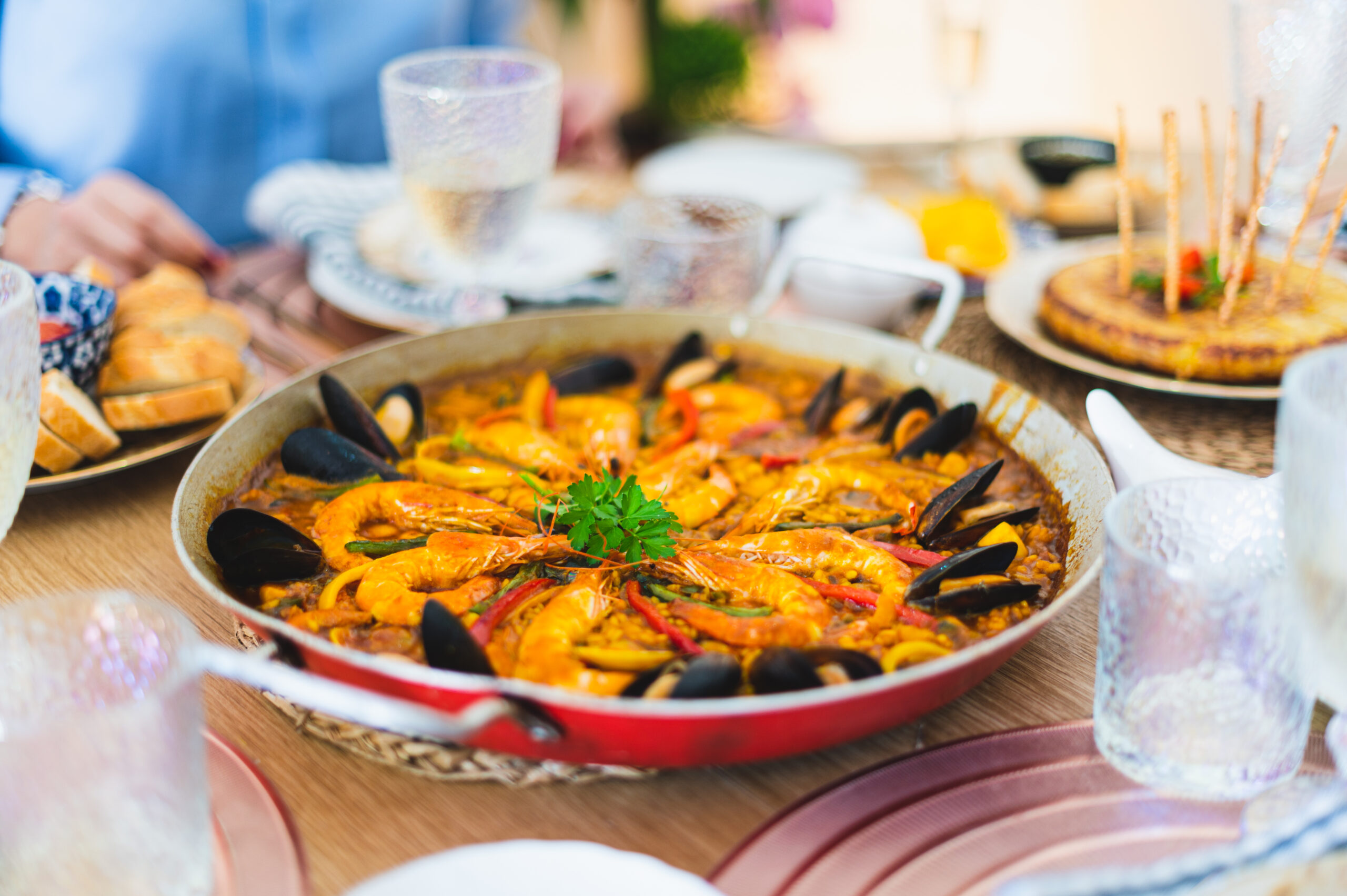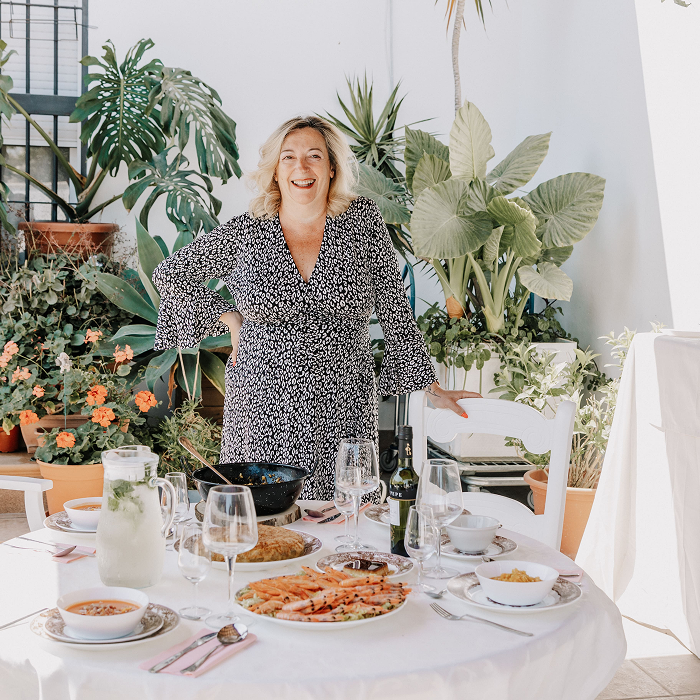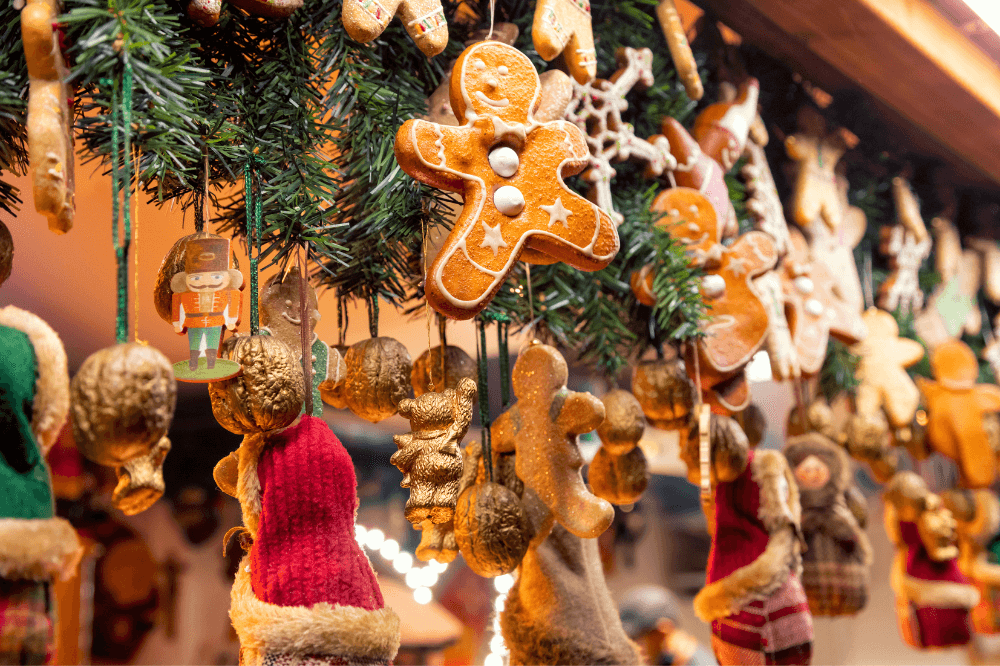The world of paella is vast and varied, with each type offering its unique blend of flavors and ingredients. In this blog, we will explore the differences between Seafood Paella vs. Traditional Valencian Paella, two of the most beloved variations of this iconic Spanish dish. Whether you are a novice or a seasoned paella enthusiast, understanding these distinctions will enhance your culinary experience and appreciation for this Spanish delicacy.
What is Paella?
Paella is a traditional Spanish rice dish originating from the region of Valencia. It is typically cooked in a wide, shallow pan over an open flame, allowing the rice to cook evenly and develop a crispy bottom layer known as “socarrat.”
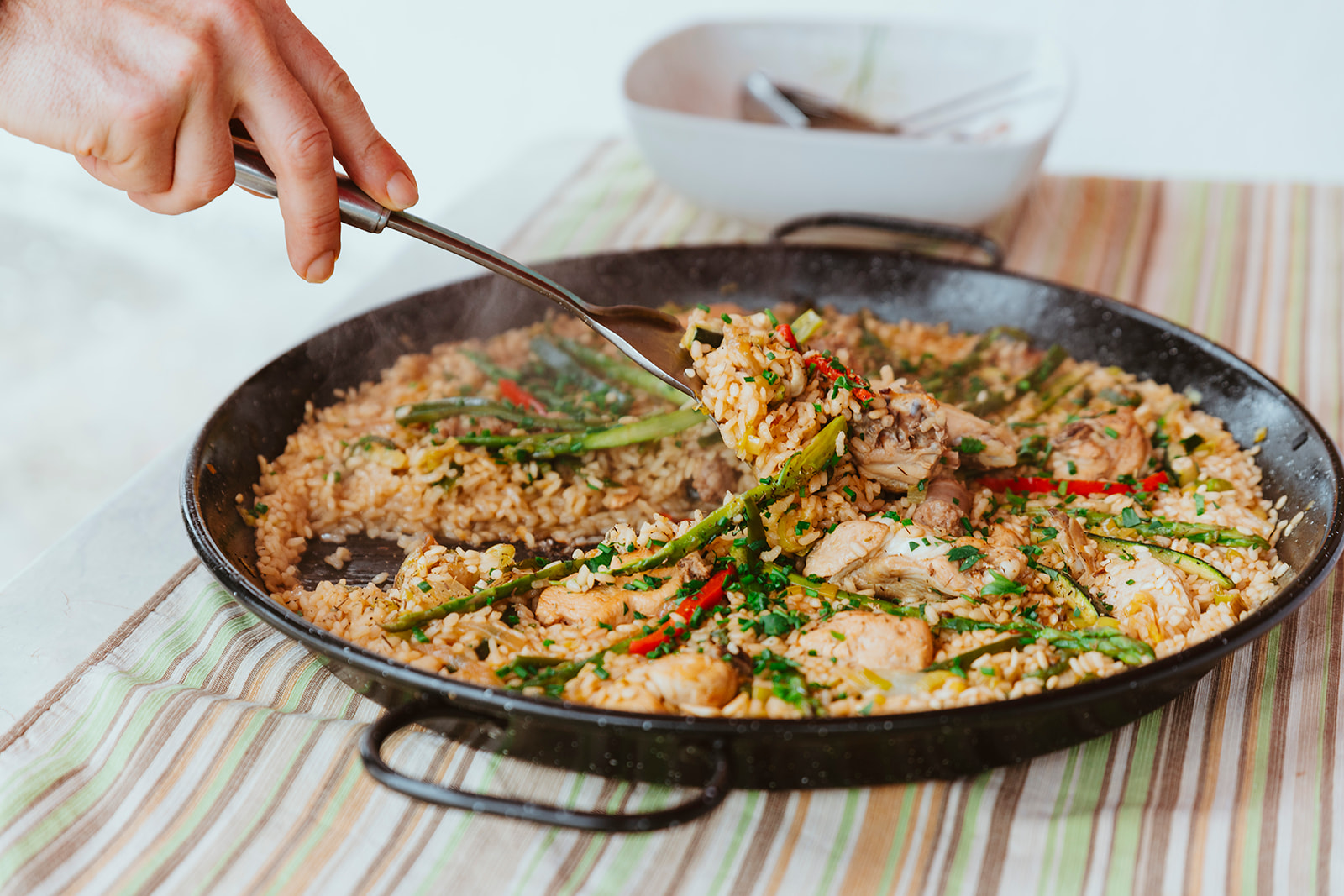
Traditional Valencian Paella
History of Paella
The origins of paella can be traced back to the mid-19th century in the Albufera lagoon area of Valencia. It began as a humble dish made by farmers and laborers, using ingredients available in the countryside, such as rice, tomatoes, onions, and snails.
Ingredients in Traditional Valencian Paella
Traditional Valencian paella, or “paella Valenciana“, includes ingredients like chicken, rabbit, and snails. Vegetables such as green beans, tomatoes, and garrofón beans are also essential components, along with saffron and rosemary for seasoning. The use of these local ingredients gives the dish its distinctive, earthy flavor.
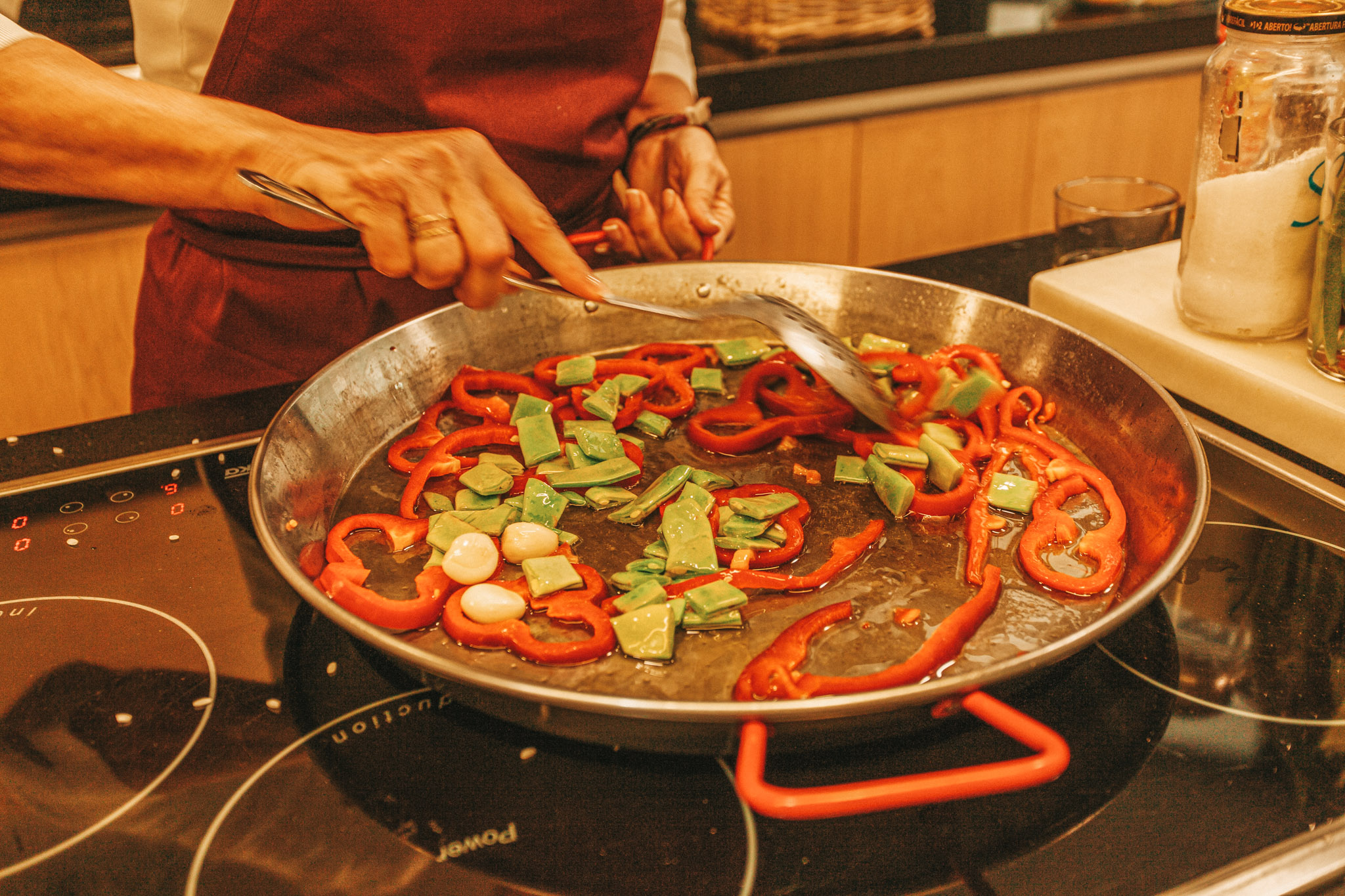
Cooking Techniques for Traditional Valencian Paella
Traditional Valencian paella is cooked in a wide, shallow pan over an open flame. The key is to brown the meat first, then add the vegetables and rice, followed by the broth. The socarrat is a prized element, achieved by cooking the paella over a high flame towards the end. Furthermore, timing is crucial to ensure all ingredients are cooked perfectly without overcooking the rice.
Flavor Profile of Traditional Valencian Paella
Valencian paella provides a rich and robust taste from the combination of meats, beans, and fresh herbs. The saffron adds a delicate floral aroma and vibrant color, while the rosemary imparts a subtle, earthy undertone. The socarrat adds a delightful crispy texture to the dish.
Best Occasions for Traditional Valencian Paella
Valencian paella is suited for family gatherings, traditional Spanish fiestas, and hearty meals during cooler weather. Its rich and comforting flavors bring people together for a shared culinary experience, making it perfect for celebrations and special occasions.
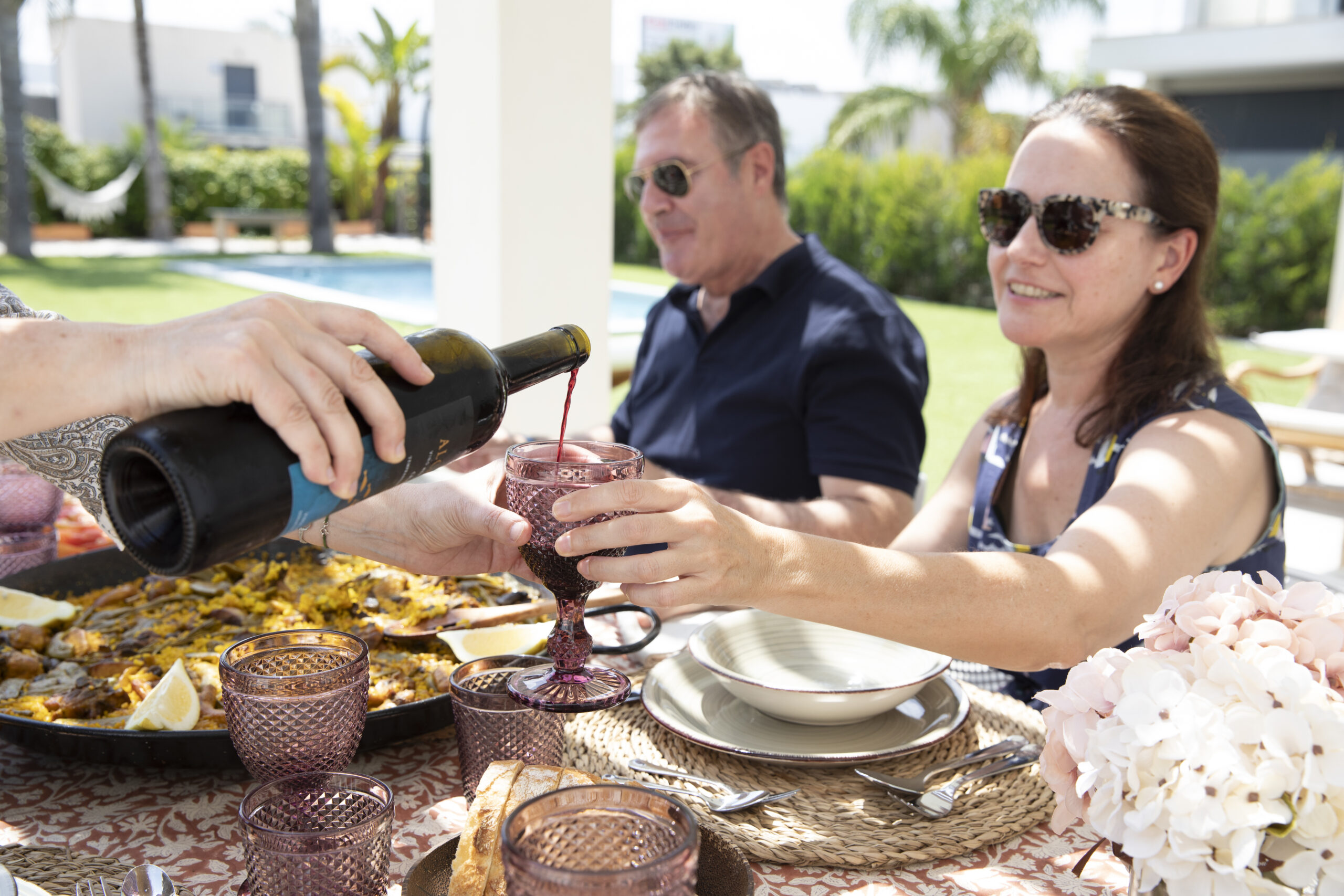
Paella Accompaniments and Drinks
Pairing paella with the right accompaniments and drinks enhances the dining experience. Popular side dishes include:
- Spanish tapas: Patatas bravas, croquetas, and olives.
- Fresh salads: Mediterranean salads with tomatoes, cucumbers, and olives.
- Traditional Spanish bread: Rustic bread to soak up the flavorful broth.
For drinks, consider:
- Sangria: A fruity and refreshing drink that complements the robust flavors of paella.
- Spanish wines: Albariño for a white wine option, or a light red Rioja.
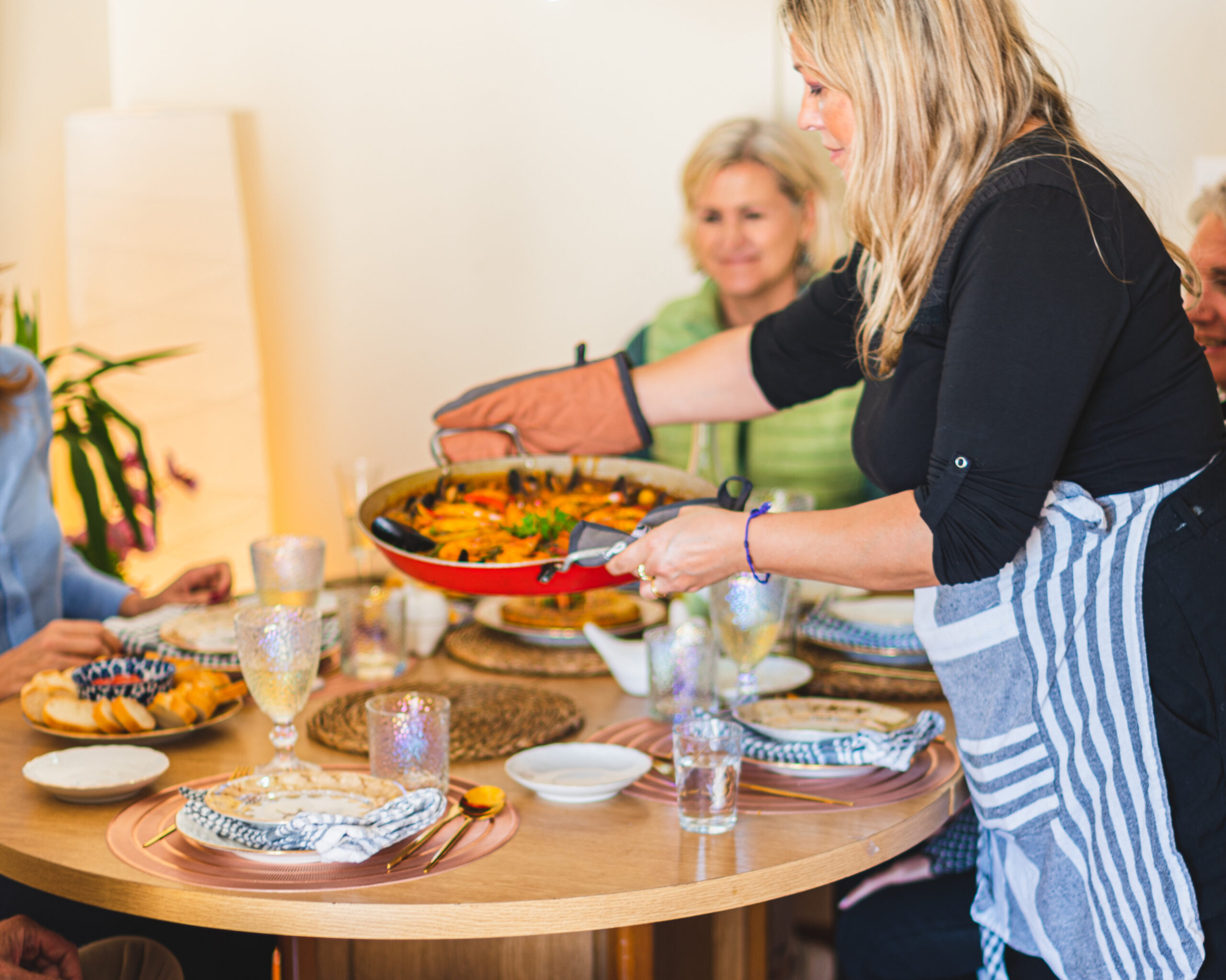
Famous and authentic spots to eat Paella:
Thanks to SAZON THE FOLK COOK, you now have the opportunity to enjoy an authentic paella experience like never before. Local chefs open their homes to provide a genuine taste of Spanish cuisine:
1. Chef Vasco’s home:
Indulge in a luxurious seafood paella crafted by a chef with experience in 3 Michelin-star restaurants. The experience starts with delicious artichokes, followed by the main course of seafood paella. You’ll also enjoy Catalan-style chicken and finish with an exquisite Basque cheesecake. Hosted in a modern house with a spacious terrace, this is an unforgettable gastronomic adventure in Tarragona. Don’t miss the chance to taste high cuisine in a cozy, intimate setting. Learn more
2. Lorena’s house:
Savor the best paella Valenciana made with chicken and vegetables while enjoying breathtaking mountain and sea views in Alicante. Lorena’s menu begins with a selection of traditional Spanish appetizers, followed by a Spanish tortilla, and concludes with her surprise dessert. Her rooftop terrace is the perfect place to enjoy a meal as the sun sets, creating a magical dining experience. Experience the warmth of Spanish hospitality and the beauty of Alicante’s coast in Lorena’s charming home. Learn more
3. Marina at Villa Piruqueta:
Experience a seafood paella in a Mediterranean-themed villa with a large private terrace in Altea. Marina’s attention to detail ensures a comfortable and delightful atmosphere. Enjoy a menu full of local flavors in a beautiful setting, perfect for a relaxed and enjoyable dining experience. The ambiance of Marina’s villa, complete with palm trees and a heated pool, offers an idyllic backdrop for an authentic paella feast. Learn more
4. Amparo’s home:
Enjoy a traditional Valencian paella with fresh ingredients from their farm in their cozy countryside home in Valencia. This experience includes a welcome appetizer with local flavors, followed by a main course of paella with chicken, rabbit, and fresh vegetables. The meal is completed with a homemade cheesecake and the refreshing “Agua de Valencia” drink. Relax by their private pool and soak in the serene ambiance of their home just 15 minutes from Valencia city. Experience the best of Valencian hospitality and culinary tradition in Amparo and Daniel’s beautiful country house. Learn more
Variations of Paella
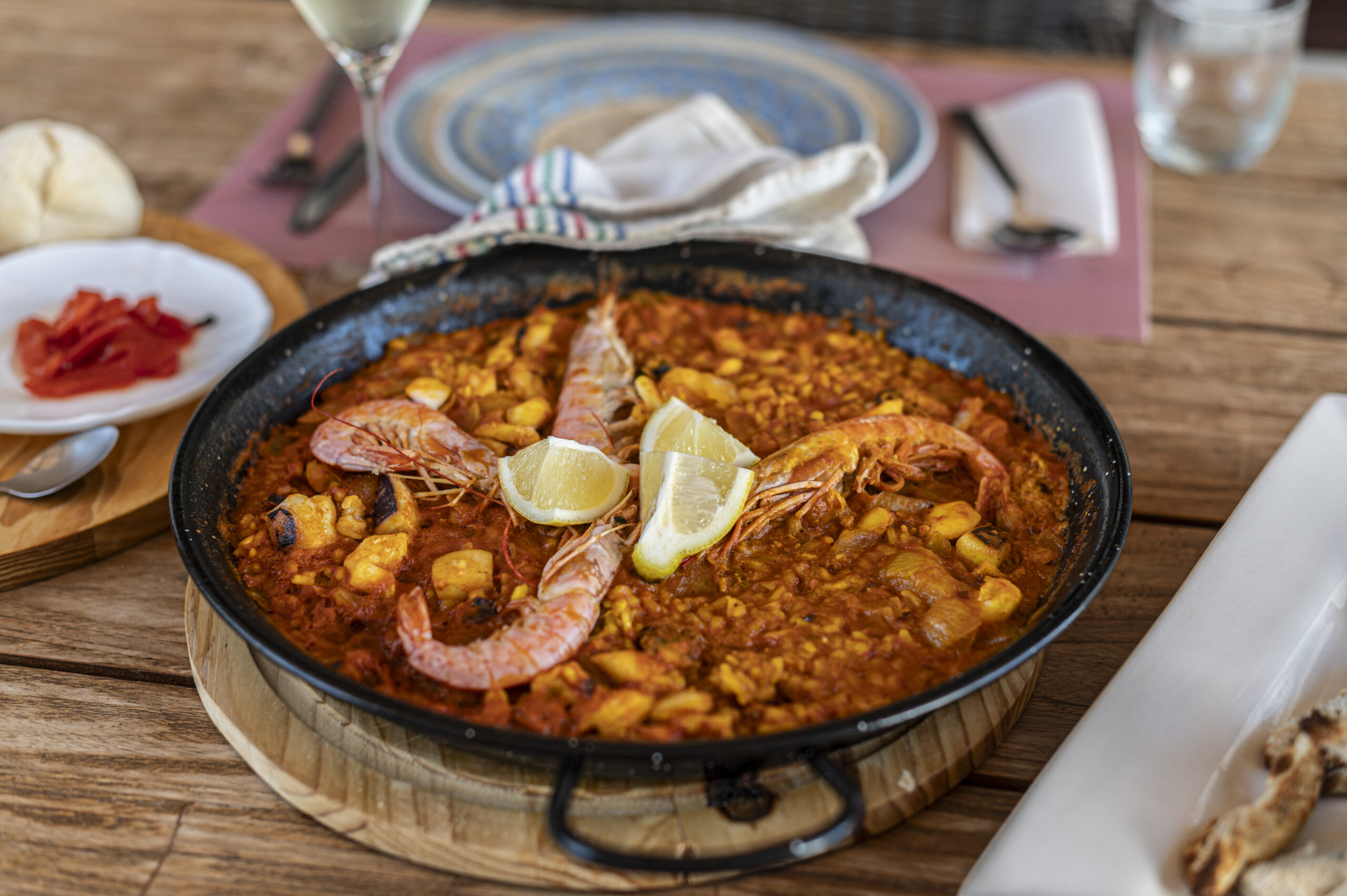
Regional Variations of Paella
Beyond Valencian paella, there are numerous regional variations, each offering a unique twist on the classic dish:
- Catalan Paella: Often includes a mix of seafood and meat, reflecting the coastal and inland culinary traditions of Catalonia.
- Andalusian Paella: Features local ingredients like pork, artichokes, and sometimes seafood, showcasing the diverse produce of Andalusia.
- Murcian Paella: Known for its use of fresh vegetables and rabbit, highlighting the agricultural richness of Murcia.
- Basque Paella: Incorporates regional specialties like cod and peppers, influenced by the Basque Country’s coastal and mountainous landscapes.
Ingredients in Seafood Paella
Seafood paella, or “paella de mariscos,” includes a variety of seafood such as shrimp, mussels, clams, and squid. The broth is typically made from fish stock, and saffron is added for its distinctive color and flavor. Additional ingredients like tomatoes, green beans, and bell peppers enhance the dish’s complexity.
Cooking Techniques for Seafood Paella
Seafood paella is often cooked in a large pan over an open flame or on a grill. The key is to layer the ingredients properly and to avoid stirring the rice too much, allowing it to develop the desired socarrat. The seafood is usually added towards the end of the cooking process to prevent overcooking.
Flavor Profile of Seafood Paella
Seafood paella offers a briny, oceanic flavor with the richness of the seafood blending with the saffron-infused rice. The use of fish stock and fresh seafood provides a depth of flavor that is both refreshing and hearty. In addition, the socarrat adds a delightful crispy texture, enhancing the overall eating experience.
Best Occasions for Seafood Paella
Seafood paella is perfect for coastal gatherings, summer parties, and festive occasions. Its light and refreshing taste makes it ideal for enjoying by the sea or at outdoor events. It’s also a great choice for seafood lovers looking to explore Spanish cuisine.
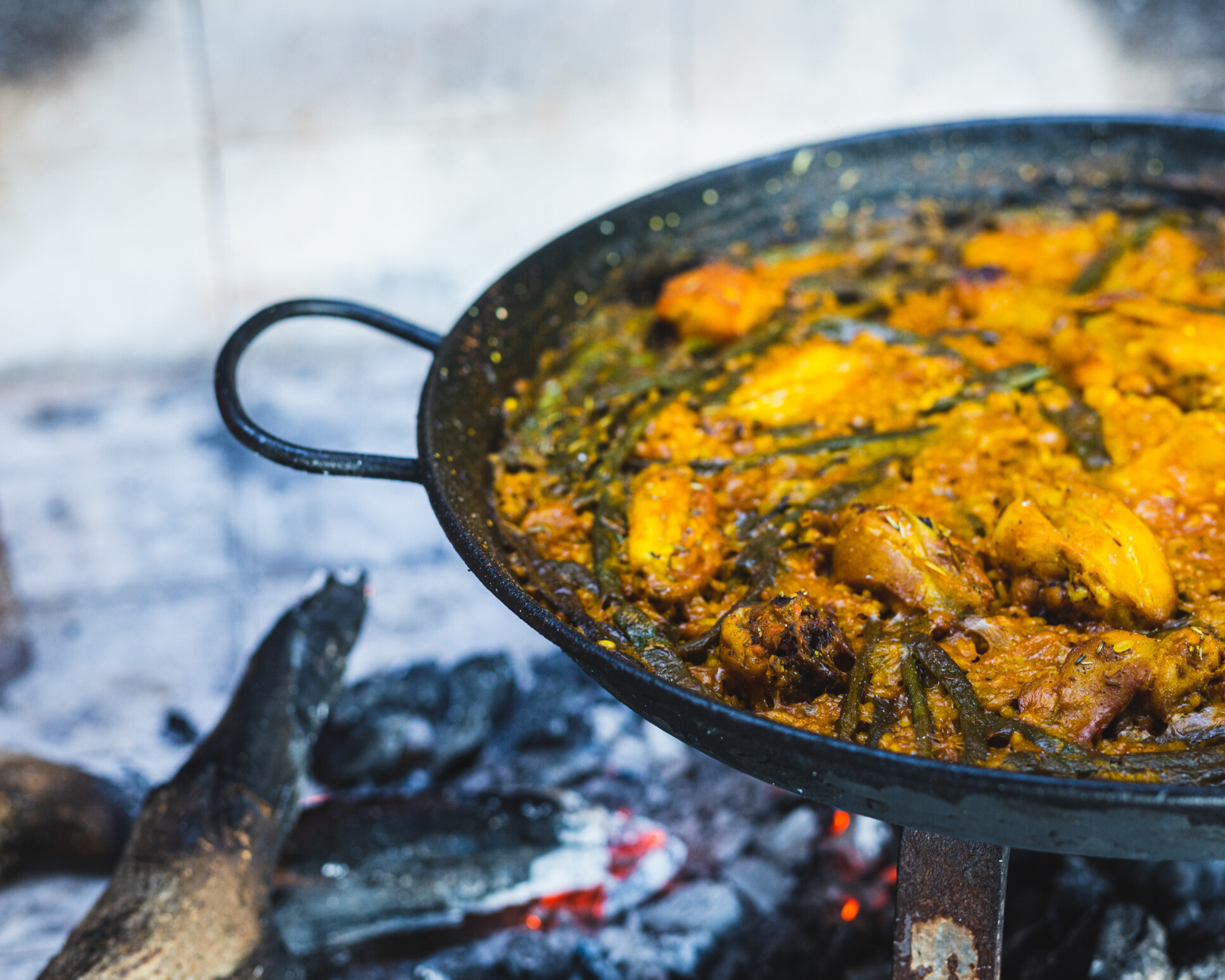
Tips for Cooking Paella on the Grill
Cooking paella on the grill adds a smoky flavor and is perfect for outdoor gatherings. Tips include:
- Using a grill with a large enough surface area: This ensures even heat distribution and allows for the proper cooking of all ingredients.
- Maintaining a consistent heat: Avoiding hot spots and ensuring a steady flame helps achieve the perfect socarrat.
- Using wood or charcoal: This adds an authentic smoky flavor that complements the seafood and spices.
Finally, seafood paella and traditional Valencian paella each offer a unique taste of Spain’s culinary heritage. Moreover, whether you prefer the briny flavors of the sea or the earthy richness of land ingredients, both types of paella provide a delicious and memorable dining experience.
Embrace the opportunity to explore these flavors and perhaps even try your hand at cooking these iconic dishes at home with SAZON THE FOLK COOK.

